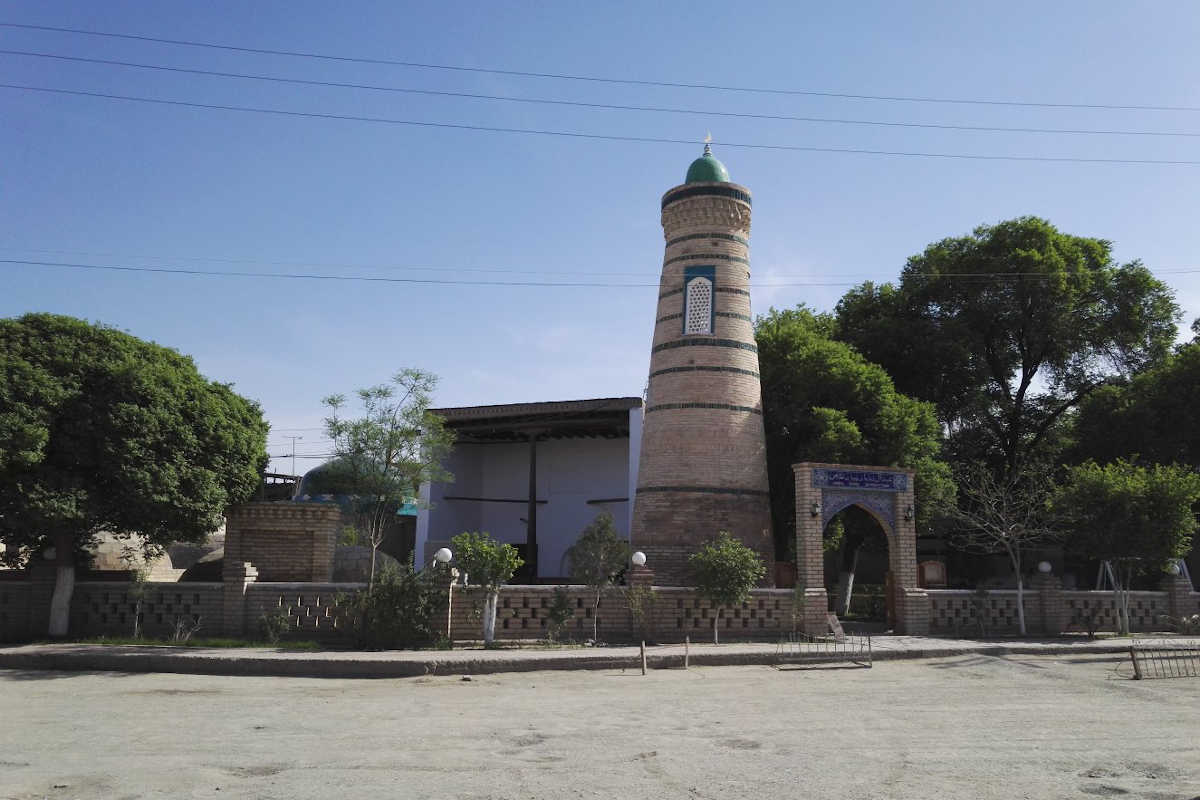Khiva - Abdal Bobo Mausoleum

The Abdal Bobo Mausoleum in Khiva: a sanctuary of Islamic history
The Abdal Bobo Mausoleum, an important building of Islamic architecture in Khiva, was built between the 8th and 18th centuries and is located in the eastern part of Dishan Qala, the historic outer city of Khiva. It is located south of the Abdullah Nasfurush Madrasah and east of the Palvon Qori Madrasah. This mausoleum was built in honour of Abdal Bobo, whose real name was Polvon Ahmad Zamchiy, an outstanding personality in the early spread of Islam in Central Asia.
Historical and religious significance
After the Arab invasion, Abdal Bobo played a decisive role in the introduction and consolidation of Islamic values in Khiva. He was regarded as one of the most ardent advocates of Islam and played a key role in the conversion of the local population. After his death, his tomb became an important pilgrimage site, attracting numerous believers over the centuries. A winter and summer mosque, a minaret and a pond were built around the mausoleum, underlining the sacred character of this place and turning it into a spiritual centre.
Architecture and style
The architecture of the Abdal Bobo Mausoleum has clear parallels with the buildings in Bukhara, indicating cultural and architectural influences between the cities of Central Asia. The use of fired bricks, artistically designed domes and filigree inscriptions give the mausoleum an impressive aesthetic. Particularly noteworthy are the interiors decorated with geometric patterns, which reflect the artistic richness of Islamic architecture of this era. The harmonious combination of religious symbolism and architectural sophistication makes the mausoleum one of Khiva’s most impressive historical monuments.
Ahmad Zamchiy: a spiritual legacy
Ahmad Zamchiy was a descendant of Hazrat Ali and thus directly related to the Prophet Muhammad (s.a.w.). He lived at the time of Abu Muslim Qutayba and is mentioned in various historical sources as his comrade-in-arms. His services to the spread of Islam were invaluable, especially in the historical cities of modern-day Uzbekistan, including Karshi, Bukhara, Miyankol and Samarkand.
Legend has it that Ahmad Zamchiy descended to the sacred Shahi Zinda Cave in Samarkand. It is also reported that he took part in the famous ‘Loy’ battles in Bukhara, which had a decisive influence on the Islamic history of the region. His spiritual significance was so great that after his death, many rulers of various cities wished to bury him in their own city in order to fill their region with his blessing.
The mystery of the seven coffins
One of the most fascinating legends about Ahmad Zamchiy is that according to his will, seven coffins (tobutes) were made and sent to seven different cities. The amazing thing was that when the coffins were opened, each of them contained an identical corpse. This mystical event increased the sanctity of his person and made him a legendary figure in the Islamic world.
The mausoleum today
Today, the Abdal Bobo Mausoleum is an important testimony to Islamic history in Khiva. It attracts not only pilgrims, but also historians, archaeologists and art lovers interested in the region’s rich past. Restoration measures have been taken to save the mausoleum from decay and to preserve its cultural and religious value for future generations.
The Abdal Bobo Mausoleum remains a place of deep respect and spiritual contemplation where the story of a great Islamic scholar lives on. The unique blend of legends, religious significance and architectural splendour makes this mausoleum an indispensable part of Khiva’s historical and cultural heritage.
